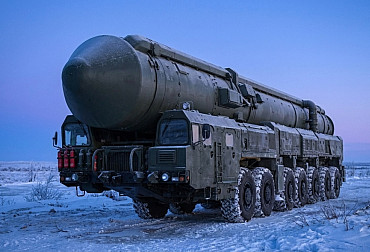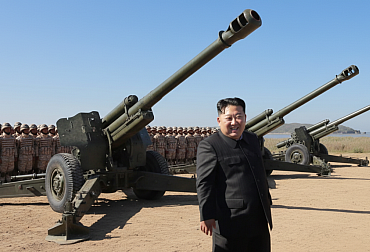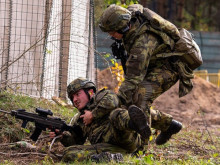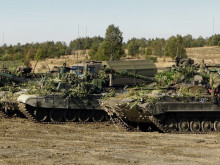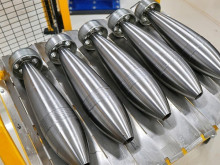First public debate on the details of the F-35 purchase
Recently, a seminar entitled "The Future of the Czech Army's Supersonic Tactical Air Force - Why the F-35?" was held in the Chamber of Deputies. After the government officially approved the purchase, this was the first space for discussion and explanation of the closely watched acquisition. The meeting was organized by the Vice-Chairman of the Defence Committee of the Parliament of the Czech Republic Mgr. Josef Flek and the Chairman of the Committee on Security of the Parliamentary Assembly Pavel Žáček, PhD. The Czech Army was represented by the Commander of the Air Force, Maj. Gen. Petr Čepelka and Brig. Gen. Jaroslav Míka. In addition to the 1st Deputy Minister of Defence František Šulc, the Ministry of Defence was represented by the head of the negotiating team for the acquisition of the F-35 aircraft, Blanka Cupáková, Chief Director of the Economic Section of the MoD, and Radka Konderlová, Chief Director of the Industrial Cooperation Section of the MoD, who ensured the involvement of the Czech industry in the negotiations.
The purchase of 24 F-35 aircraft for 150 billion crowns was approved by the government at the end of September, the last step before the signing of the contract between the two countries, after the approval of the US side. According to an earlier statement by Defence Minister Jana Černochová, this amount includes the cost of preparing for operations in the Czech Republic. It is thanks to the agreement of the Czech government that some information has been released after the agreement with the US side to inform the public about the content and scope of the entire purchase of 5th generation aircraft for the Czech army. The first F-35 fighters for the Czech Armed Forces will be produced in 2029, and all 24 machines will be in the Czech Republic by 2035. The Ministry of Defence estimates the total cost of acquiring and operating F-35 fighters until the end of their service life in 2069 at CZK 322 billion. An important parameter for the successful implementation of this tender is the stabilisation of the financing of the Czech Armed Forces at 2% of GDP, which was enacted this June.
At the beginning of the seminar, First Deputy Minister of Defence František Šulc said that defence should be a trans-partisan issue. The question is then to what extent, especially on the floor of the Chamber of Deputies, this will be maintained. The open discussion on the modernisation projects of the Czech Armed Forces was also supported by one of the organising MPs, Josef Flek, who told CZ DEFENCE: "It is proof of our responsibility, because as soon as it was possible in terms of Czech law, we came out with information and organised a seminar on the floor of the Chamber of Deputies. This is one of the biggest military acquisitions and therefore we have to and want to explain why the F-35. The acquisition decision did not happen overnight. The military recommendation alone was 2 years in the making and started under Andrej Babiš's government, after which political responsibility had to be taken. The Minister had the courage. After that, tough and long negotiations with the American side began. In the comparison of seven aircraft that took place under the ACR, the F-35 came out both economically and technologically victorious. The funding is spread over 11 years and is 7% of the 2% of GDP of the defence budget. Thus, we will not jeopardise other army contracts, such as the air defence forces, the modernisation of the mechanised brigade. I see the involvement of Czech industry in production as an important aspect, but also the possible involvement of universities in research and development. The world situation does not give us room to postpone the modernisation of equipment for Czech soldiers. Our country is not among the countries with the largest army, but we must ensure that it is at the technological level."
The Commander-in-Chief of the Czech Air Force, Major General Petr Čepelka, reminded in his opening speech that currently the Air Force is not only about tactical aviation. "The Air Force is primarily used to defend the Czech Republic and support other types of forces. The primary area of focus of the Air Force is the protection of the airspace of the Czech Republic and the airspace of the allied countries," said General Čepelka, who also pointed out that the new 5th generation aircraft have to meet not only the "Air to Air" but also "Air to Ground" assurance and can be used in high and low intensity combat operations, in operations to promote support and peacekeeping in humanitarian or rescue operations and on the territory of our country. They can also be used for the protection of objects important for the defence of the state, in combat operations of special and ground forces, or in support of the Police of the Czech Republic and the Integrated Rescue System. "Regarding the current numbers of the tactical air force, I would like to stress that we currently operate 38 pieces of aviation equipment, and this is basically 12 + 2, i.e. a total of 14 JAS-39 Gripen aircraft and 24 L-159 aircraft. Of course, we would like to reduce this number and operate 24 F-35s," said General Čepelka, adding that the future concept of the Air Force envisages that in addition to 24 F-35s, it will also use unmanned aerial vehicles.
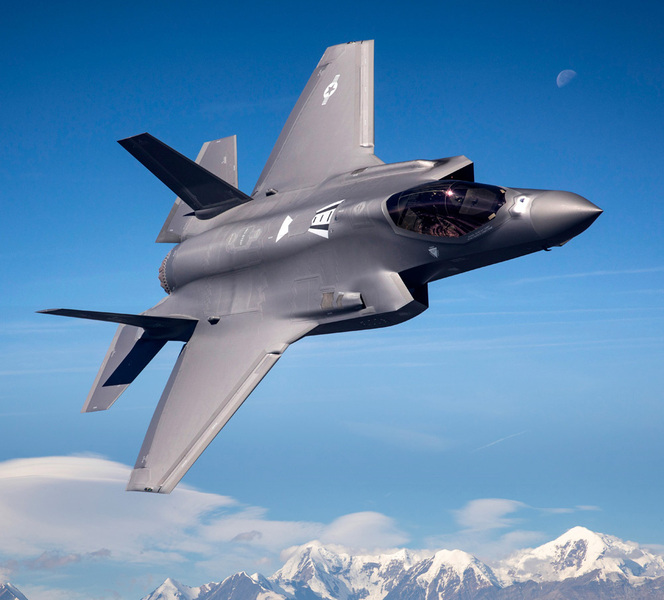
Brigadier General Míka then recalled the entire selection process, which has been mentioned several times in the media. It is important to recall that the integrated task force selected the winning variant from seven aircraft types (F-15, F-16, F-18 in the most advanced versions, F-35, French Rafale, Eurofighter and JAS-39 Gripen) and made inquiries to the various countries where each tactical aircraft is produced through a comprehensive form (RFGI) that included, in addition to price, a robust questionnaire on the aircraft's capabilities and life cycle. Thus, these were government, not company, bids. The expert agency JAPCC also added its opinion, which, like the integrated team of the Czech Army, identified the same solution as the most suitable for the needs of the Czech army in the framework of fulfilling the tasks of the North Atlantic Alliance.
Blanka Cupáková, Chief Director of the Economic Section of the MoD, said at the seminar that the US government has its own very strict rules and that some rules cannot be exceeded because the US government has the same provisions for everyone. She said this was already evident in the negotiations for the delivery of H-1 helicopters. "At the same time, the US government does not make any profit, but at the same time it does not create any debt. That is the basic rule by which you can be sure that we get cars, machines and all that goes around it at exactly the same price as everybody else, because the US has established that by its laws and regulations. At the same time, these rules imply what is also often the subject of questions - namely, that the US government cannot be sanctioned," Cupáková said. Nevertheless, according to her, several successful steps have been made, for example, with the two largest entities Lockheed Martin and Pratt & Whitney, the possibility of industrial cooperation has been opened for our entities.
There are still numbers to be added. The US Congress has approved the financial framework for this contract at the level of USD 5.620 billion (CZK 119.1 billion). The amount that has been negotiated into the forthcoming contract is USD 4.999 billion (CZK 105.9 billion). In addition to the 24 F-35A Lighting II Block 4 aircraft, this price also includes munitions, life cycle assurance and spare parts for the duration of the contract, simulators, pilot and technician training, cryptographic assets and other components, pilot equipment, support for the construction of fixed infrastructure and complete equipment for the operation of the aircraft and weapon systems. Over a 10-year horizon, the repayments of this tender amount to an average of 7.26% of the defence budget.

Radka Konderlová, Senior Director of the Industrial Cooperation Section, said in this context that it was with Lockheed Martin and Pratt&Whitney that a total of 14 projects (11 LM, 3 PW) involving a total of 13 companies have been implemented for a total of CZK 15.3 billion. Key companies for industrial cooperation include Ray Service, Honeywell, LOM PRAHA, VR Group and PBS Velká Bíteš. In addition to the F-35 programme, PBS Velká Bíteš could also participate in the development of a new generation APU suitable for the 6th generation aircraft in cooperation with Pratt & Whitney. Industrial cooperation is a crucial reference for the Czech industry in a contract of this type. We therefore asked Radka Konderlova the following questions:
How would you assess the level and share of industrial cooperation of Czech companies in the F-35 project?
For the overall context of the negotiations on industrial cooperation, it should be mentioned that the F-35 system has been developed and financed for many years by the programme's partner countries, which include, in addition to the USA, the UK, Norway and Italy. Companies from the programme partner countries have divided the supply chain and it is extremely difficult for entities from other countries to enter this chain. This is also due to the fact that the aerospace industry is generally very demanding in terms of the necessary certification. In practice, then, it appears that in the efforts to diversify suppliers of critical components, there is pressure from programme countries to supply their domestic industry. This is also why very few non-programme countries have even initiated industrial cooperation negotiations. Despite these obstacles, we have nevertheless managed to negotiate a total of 14 industrial cooperation projects with the two main platform suppliers, Lockheed Martin and Pratt & Whitney, 3 of which have the potential to be integrated into the existing F-35 supply chain. However, other projects also involve technology transfer, know-how sharing and access to intellectual property from the world's largest defence companies. So I have to say that the Ministry of Defence, and I personally, are satisfied with the result that we have achieved during the negotiations. I am convinced that these 14 industrial cooperation projects will not only ensure strong links with the US at the strategic-industrial level, but will also help to take the Czech entities involved to a significantly higher technological level.
At the seminar, you mentioned the possibility of cooperation with Leonardo, which is expected to deliver the second 12 F-35 aircraft to the Czech Armed Forces. Does this cooperation have a more solid outline? Which fields is your section focusing on?
Leonardo is the original equipment manufacturer (OEM) of the F-35 aircraft, so our primary ambition is to connect the main suppliers of the F-35 programme with Czech industry to establish cooperation on deliveries for this aircraft. Currently, colleagues from the Industrial Cooperation Section are in dialogue with Leonardo about a suitable format and date for an industrial day to establish contacts with potential Czech partners. In addition, Leonardo operates an F-35 assembly line in Cameri, Italy, which has the capability for higher levels of maintenance of this platform. Here, too, it is our wish to involve Czech companies in the cooperation. But linking Czech and Italian industry has other benefits beyond the acquisition of the F-35 itself. This is, for example, the search for partners for projects financed by the European Defence Fund. This initiative enables the creation of supply chains for later land, air and naval platforms by setting up cooperation in the research and development phase. Thanks in part to the European Defence Fund, we are thus able to avoid the situation that exists with the F-35 system. This is the closed nature of the supply chain and the need to 'break in' in a complex way.
How does the Industrial Cooperation Section manage to promote Czech companies in modernisation projects for the Czech Armed Forces? What role do state-owned enterprises established by the Ministry of Defence play in this process?
I must say that it is very good. This is due to the number of very high-quality people and companies, both in the defence and security industry and, for example, in the aviation industry. This fact makes our work very easy. We hear similar assessments from foreign suppliers of military systems. State-owned enterprises, of which the MoD is the founder, are key for us. According to the Strategy for armaments and support for the development of the defence industry until 2030 in the Czech Republic, these are so-called strategic suppliers of the first level in terms of security of supply. Thus, there are certain capabilities - particularly in the area of life cycle assurance - that the MoD prefers to have under its control to ensure the continued continuity of supply during peace, crisis and any ongoing conflict.
Another important parameter is the overall transformation of the Czech Air Force after 2035, which is why we approached Maj. Gen. Petr Čepelka.
How will the capabilities and concept of the Air Force change after 2035?
The Air Force concept is based on the documents Concept for the Construction of the Czech Armed Forces (KVAČR 2030) and the Long-Term Defence Outlook (DDV 2035), which were issued in 2019 and were based on the then valid Security and Defence Strategy of the Czech Republic. The new ACR concept documents are awaiting revision, which will have to correspond with the strategies issued this year (Security Strategy June 2023, Defence Strategy October 2023), which emphasise the current security situation or predict the future security environment. The Air Force Concept must correspond to these key statutes of the 2023 Defence Strategy:
- The all-military principle with emphasis on a combination of technological maturity and robustness;
- Protection of the airspace of the Czech Republic and allied countries by means of a new generation of multi-purpose supersonic aircraft with the capability of deployment in the future multi-domain and digital warfare environment (combined and coordinated lethal and non-lethal activities across the domains of air, land, water, cyberspace, space). All within the framework of the NATINAMDS alliance system and coalition air operations;
- Technologically advanced armed forces equipped with advanced combat systems, including unmanned systems, and possessing the ability to operate with precision-guided munitions at long ranges
In the context of the acquisition of the new 5th generation F35 supersonic aircraft, the Czech Armed Forces and the Air Force will acquire a system that corresponds to the aforementioned theses of the Czech defence strategy. The new Concept of the Czech Armed Forces and its future capabilities must be directed towards the conduct of operations in Netwrok Centric Warfare, in which air power will play a crucial role. This will not only be a fundamental role in protecting airspace within NATINAMDS and conducting Air Force defensive/offensive operations, but also a major contributor to the all-arms principle of warfare (combined arms), data sharing for command and control (C2/Command Control) and intelligence, surveillance and reconnaissance (ISR/Intelligence, Surveilance, Reconnaissance). All this will be implemented in accordance with the NATO Joint Air Power Strategy (NATO Joint Air Power Strategy, 2019).
The specific capabilities with the new generation of F-35 aircraft will enable the conduct of the above mentioned activities even in the non-permissive and saturated environment of advanced air defence systems (S300, S400). The F-35 will enable the detection and identification of air/ground targets at long range and share information about them to the command and control system, and to other components of the AFN/NATO. The ability to accurately strike ground targets in all weather conditions with acquired munitions (including long-range), will enable both ground force support and the ability to destroy or degrade enemy ground-based air defenses.
The unique capability of the F-35 system is that a single swarm of aircraft is capable of executing a killchain, or the individual actions and steps required to engage a given target, in a very short period of time. These steps are: finding the target (Find), determining the exact location of the target (Fix), targeting a specific effector (Target), tracking (Track), applying force (Engage), and evaluating the effect (Assess). A process that many times takes on the order of minutes to tens of minutes can be accomplished in tens of seconds to minutes.
What will the introduction of unmanned aerial vehicles to replace the L-159 mean for the Air Force's capabilities?
Unmanned systems (UAS) have and will continue to play a vital role in conducting combat operations. The conflicts in Afghanistan, Iraq, Nagorno-Karabakh and Ukraine show us how these assets contribute to the conduct of combat operations. It is reconnaissance, surveillance, targeting, precision kinetic attack. L-159s will become combat irrelevant in the future operational environment and their role will be taken over by these unmanned systems, which are economically cheaper and more technologically advanced. Moreover, without exposing flying personnel to life-threatening situations. The acquisition of UAVs of class II and III (150-600 kg and over 600 kg respectively) will enable long operations in the area of interest at altitudes of 5 to 19 km and the performance of the above-mentioned tasks in the conduct of combat operations. In accordance with the defence strategy, they will form part of the networked battlefield and multi-domain operations, thus contributing to the expansion of situational awareness. The acquisition of UAS systems and capabilities will entail integration into the air force structure, deployment to selected air force bases and recruitment or retraining of personnel. In my opinion, all of the Air Force capabilities being built after 2030-2035 will contribute to the attractiveness of the military. The planned capabilities of the Army and Air Force will become an interesting, attractive, and competitive employment alternative, especially for the current generation surrounded by and in tune with modern technology.
The discussion on the topic of the acquisition of 5th generation aircraft by the Czech Army is not over, at least on the floor of the Chamber of Deputies. Members of the Defence Committee will return to the debate on the purchase of US Lockheed Martin F-35 Lightning II supersonic aircraft during the 32nd session on Thursday 19 October.

















